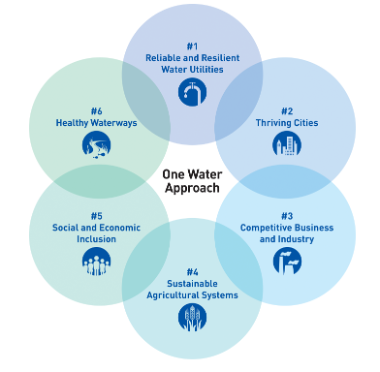19 March 2024 : Indian Express Editorial Analysis
Indian Express Editorial Analysis
19-March-2024
1. A BANK ACCOUNT OF HER OWN
|
Topic: GS2 – Governance – Government policies – Interventions for development in various sectors GS2 – Social Justice – Vulnerable sections: Welfare schemes for vulnerable sections This topic is relevant for both Prelims and Mains in the context of understanding the significance of financial inclusion of women. |
|
Context: |
|
Global Trends in Financial Inclusion:
- According to the World Bank’s Global Findex Database 2021, there has been a significant global increase in adult ownership of bank accounts or regulated financial services between 2011 and 2020, with a noteworthy 50 percentage points rise.
- India has seen a commendable jump of 42 percentage points during this period, with a substantial closing of the gender gap in account ownership.
- The Pradhan Mantri Jan Dhan Yojana, initiated in 2014, has played a pivotal role in this progress, facilitating the opening of basic savings accounts for over 28 crore women as of January 2024.
- Moreover, various government schemes such as the Deendayal Antyodaya Yojana and the National Rural Livelihood Mission have contributed to enhancing financial inclusion for women.
Progress in India’s Financial Inclusion Landscape:
- Through multiple rounds of the National Family Health Survey (NFHS), significant progress has been observed in the financial inclusion of women in India.
- The NFHS data highlights improvements in crucial criteria such as sovereignty over financial resources, possession of self-operated bank accounts, awareness about micro-credit programs, and utilization of such schemes by women over the past two decades.
Drivers of Financial Inclusion Among Women:
- NFHS data also elucidate various individual and household factors influencing women’s access to financial services in rural India.
- Education, digital skills, occupation, access to electronic media, and age emerge as significant drivers of financial inclusion among women.
- Educated and digitally skilled women are more likely to be aware of and utilize micro-credit schemes, while occupation also plays a role, with working women showing higher engagement with such programs.
Implications for Policy and Action:
- The study underscores the importance of tailoring financial inclusion initiatives to address specific demographic and socio-economic factors.
- Programs should target women in households not headed by women and integrate financial awareness modules into educational and skill development frameworks.
- Given the increasing digitization of financial transactions, there is a pressing need to educate individuals, especially youth, on cyber safety and secure digital banking practices to mitigate the risks of financial cyber-crimes and frauds.
Conclusion:
- Financial inclusion stands as a cornerstone for sustainable development, with its impact reverberating across various sectors.
- In India, concerted efforts have led to notable progress in enhancing financial inclusion, particularly among women.
- However, there remains a need for targeted interventions to address the diverse socio-economic factors influencing access to financial services, ensuring that no segment of society is left behind in the journey towards inclusive growth and development.
|
What are the Challenges? |
How to address these concerns?
|
|
PYQ: Pradhan Mantri Jan-Dhan Yojana (PMJDY) is necessary for bringing unbanked to the institutional finance fold. Do you agree with this for financial inclusion of the poorer section of the Indian society? Give arguments to justify your opinion. (200 words/12.5m) (UPSC CSE (M) GS-3 2016) |
|
Practice Question: Discuss the significance of financial inclusion in India’s development trajectory, with a special emphasis on its impact on women empowerment. Evaluate the effectiveness of government initiatives in promoting financial inclusion and suggest measures to address the remaining challenges. (250 words/15 m) |
2. When the taps run dry
| Topic: GS3 – Environment – Environmental pollution and degradation GS1 – Urbanization, their problems and their remedies. This topic is relevant for both Prelims and Mains in the context of knowing facts about the water crisis in Bengaluru and its significant implications for urban governance and sustainability. |
| Context: |
|
Reflections on Bengaluru’s Waterscape: Past and Present:
- Bengaluru, once known as Kalyana Nagara or the City of Lakes, boasted a rich waterscape featuring lakes, kalyanis, baavis, and gokattes, supporting various livelihoods and cultural activities.
- However, colonial and post-Independence urbanization led to the conversion of these water sources for different land uses.
- The city’s transformation into India’s software capital further accelerated this trend, resulting in the disappearance of wetlands and encroachment upon water channels, leading to the current scenario of sewage-filled lakes and depleted water bodies.
Equity and Access Issues in Water Distribution:
- The inequitable distribution of water resources is evident, with affluent areas connected to municipal water supplies while peripheral areas rely on water tankers.
- Simultaneously, slums and poorer neighborhoods struggle to access even basic water needs.
- This disparity in access to water violates the fundamental human right to water for a significant portion of Bengaluru’s population, underscoring systemic issues in water governance and distribution.
Government Mandates and Responsibilities:
- While government mandates aim to provide safe and sufficient water for all residents, the reliance on distant water sources like the Cauvery River highlights the challenges of urbanization and water scarcity.
- Despite initiatives for rainwater harvesting and sewage treatment, the failure to address water scarcity reflects a broader failure in governance and responsibility towards sustainable water management.
Reflections on Water: Reimagining Our Relationship, Equity, and Responsibility
- It is imperative for Bengaluru to reimagine its relationship with water by reconnecting with its traditional water sources and addressing the inequity in access.
- Moreover, a shift towards responsible water usage and conservation practices is crucial for ensuring the city’s sustainable water future.
- By embracing these principles, Bengaluru can break free from the cycle of scarcity and flooding, fostering a more resilient and equitable water ecosystem for its residents.
Conclusion:
- Bengaluru’s water crisis demands urgent attention and concerted action from both the government and its residents.
- By reflecting on the city’s historical waterscape, addressing access and equity issues, and committing to responsible water management practices,
- Bengaluru can navigate away from its current cycle of water-related challenges towards a more sustainable and equitable water future.
| PYQ: What are the benefits of implementing the ‘Integrated Watershed Development Programme’? (2014) 1) Prevention of soil runoff 2) Linking the country’s perennial rivers with seasonal rivers 3) Rainwater harvesting and recharge of groundwater table 4) Regeneration of natural vegetation Select the correct answer using the code given below: (a) 1 and 2 only (b) 2, 3 and 4 only (c) 1, 3 and 4 only (d) 1, 2, 3 and 4 Ans: C |
| Practice Question: Discuss the multidimensional challenges posed by the water crisis in Bengaluru and analyze the implications for environmental sustainability, and social equity. Suggest comprehensive policy measures to address the crisis. (250 words/15 m) |
For Enquiry

19 March 2024 : PIB Summary for UPSC

19 March 2024 : Indian Express Editorial Analysis

18 Mar 2024 : Daily Current Affairs Quiz

18 Mar 2024 : Daily Answer Writing

18 March 2024 : Daily Current Affairs

18 March 2024 : Indian Express Editorial Analysis

18 March 2024 : The Hindu Editorial Notes PDF

18 March 2024 : PIB Summary for UPSC

16 Mar 2024 : Daily Answer Writing

16 Mar 2024 : Daily Current Affairs Quiz
March 2024 PIB 19 March 2024 : PIB Summary for UPSC PIB Summary for UPSC
19-March -2024
1. EX TIGER TRIUMPH – 24
Topic: GS2 – International Relations
The…
Indian Express 19 March 2024 : Indian Express Editorial Analysis Indian Express Editorial Analysis
19-March-2024
1. A BANK ACCOUNT OF HER OWN
Topic: GS2 – Governance…
Daily Quiz 18 Mar 2024 : Daily Current Affairs Quiz 18 Mar 2024 : Daily Quiz…
mains answer writing 18 Mar 2024 : Daily Answer Writing Mains Answer Writing
18-March-2024
Q1) Non-governmental organizations (NGOs) play an important role…
Daily Current Affairs 18 March 2024 : Daily Current Affairs Daily Current Affairs
18-March -2024- Top News of the Day
1. Where names indicate the order of birth…
Indian Express 18 March 2024 : Indian Express Editorial Analysis Indian Express Editorial Analysis
18-March-2024
1. Only if States Agree
Topic: GS2 – Governance…
March – The Hindu Editorial 18 March 2024 : The Hindu Editorial Notes PDF The Hindu Editorial
18-March-2024
1. Many elections, AI’s dark dimension
Topic: GS2 – Governance
GS3…
March 2024 PIB 18 March 2024 : PIB Summary for UPSC PIB Summary for UPSC
18-March -2024
1. INDIAN ARMY CONTINGENT DEPARTS FOR SEYCHELLES FOR JOINT MILITARY…
mains answer writing 16 Mar 2024 : Daily Answer Writing Mains Answer Writing
16-March-2024
Q1) Enumerate the limitations of Citizen charter as a governance…
Daily Quiz 16 Mar 2024 : Daily Current Affairs Quiz 16 Mar 2024 : Daily Quiz…




